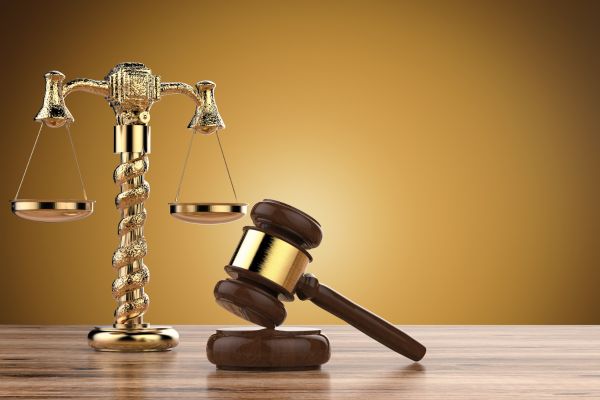A blanket license allows users, such as radio and television stations, to utilize music from an entire repertoire for the license’s duration, making it a practical alternative to obtaining individual licenses. However, this practice raises legal concerns regarding competition rules, as it creates tension between promoting creativity and preventing unfair commercial practices.[1]
In the US case of Broadcast Music, Inc. v. CBS, Inc.,[2] Broadcast Music Inc. was established to streamline the licensing process for musical works, allowing copyright owners to collectively license their compositions through blanket licenses. CBS sued BMI and ASCAP, alleging that these licenses constituted price-fixing and monopolization. The Supreme Court ruled that blanket licensing does not violate antitrust laws under the Sherman Act, determining that such licensing schemes should be evaluated under the “rule of reason” rather than being deemed illegal per se. The ruling reinforced the legality of blanket licenses in the music industry.
In India, blanket licensing is governed by “Performer Rights” under Section 38 of the Copyright Act, which grants performers exclusive rights to their performances, enabling them to receive royalties. Following amendments in 2012, Copyright societies, such as the Indian Performing Right Society (IPRS), were established to facilitate blanket licensing for both live and electronic performances. The Act also recognizes exceptions like “fair dealing,” allowing certain uses of copyrighted works without licensing, particularly in educational and religious contexts, drawing from international agreements like the Berne Convention.[3]
Copyright Societies: Controversial folklore
The Copyright Act in India grants copyright societies a monopoly status, allowing only registered collecting societies to issue licenses for cinematographic films. Section 33 mandates that the government can register only one society per class of work, leading to concerns about anti-competitive effects in the collective administration of copyright. This monopoly positions copyright societies in a dominant market role, enabling them to control licensing and potentially affect competition.[4]
Abuse of dominant position by Copyright Societies
According to Section 4(1) of the Competition Act, 2002, no enterprise is permitted to abuse its dominant position. A “dominant position” refers to a strong market position that allows an enterprise to operate independently of competitive forces, which can harm competitors or consumers. While holding a dominant position is not inherently illegal, its abuse is prohibited. The monopoly granted to copyright societies has raised suspicions about their impact on market competition. Unchecked monopolies can lead to power concentration and potential misuse of authority.
In contrast, jurisdictions like the United States and the European Union impose strict scrutiny on copyright societies through competition law, while India lacks substantial jurisprudence addressing these issues.
A copyright society may abuse its dominant position in several ways:
- Demanding royalties on works that are not protected by copyright.
- Charging royalties on works marketed in other member states with the authors’ consent.
- Imposing higher fees on imported recording devices compared to locally produced ones.
- Differentiating royalty calculations between commercial and public broadcasters without objective justification.
The activities of Indian copyright societies have the potential to disrupt competition in the market, leading to abuses that could negatively impact both copyright holders and users.
Stance of a User
In the HT Media case[5], CCI had noted that Copyright societies IPRS and PPL, have placed unreasonable conditions on users when granting licenses for their works, which could lead to an abuse of their dominant position. Both organizations charge a flat annual fee for blanket licenses without considering the actual usage level of their clients. Users are required to pay this annual fee regardless of their specific needs. Furthermore, these societies typically demand royalties on a six-month or yearly basis.
Many in the entertainment industry have claimed that they are forced to obtain licenses on an annual or semi-annual basis, even if they do not fully utilize the repertoire offered by IPRS and PPL. For instance, hotel owners may be required to pay for a full year’s license even if they only use the music occasionally. This practice of compelling users to pay for periods when they are not utilizing the works may come under scrutiny under Section 4(2)(a)(i) of the Competition Act.
Standpoint of Copyright holders
IPRS and PPL do not permit small or regional music labels to join their membership due to the lower popularity of their music. The South India Music Association has claimed that PPL denied its membership on unreasonable grounds, stating that eligibility requires at least 50 music albums, excluding classical and devotional works.[6] This suggests that PPL does not recognize devotional music under its criteria, despite there being no such stipulation in its Memorandum of Association.
Furthermore, PPL’s registration certificate does not differentiate between film and non-film music, which could be seen as a refusal under S. 3(4)(d) of the Competition Act. This situation raises concerns about the potential abuse of dominant position by these collecting societies. By imposing strict membership criteria and unfair conditions, IPRS and PPL may be engaging in practices that limit competition and hinder smaller labels from participating in the market.
Recommendations
The coexistence of competitive policies and copyright laws is essential for protecting consumer welfare while fostering market competitiveness. Both legal frameworks, which have developed independently, play a crucial role in safeguarding artists’ interests by providing exclusivity while ensuring healthy competition.
Copyright laws empower artists to pursue their creative endeavours without fearing infringement or damage to their reputation and financial stability. These laws aim to protect creators’ rights and do not intend to conflict with competition laws. However, it is important to differentiate between exclusivity and monopoly, applying a rule of reason approach to each case to navigate this distinction effectively.
The Copyright Act incorporates safeguards to prevent the misuse of copyright that could adversely impact public interest. These safeguards include mechanisms such as involuntary licenses, including compulsory and statutory licenses, previously outlined. Additionally, copyright societies established under the Act are instrumental in addressing market inefficiencies and promoting fair competition by preventing the concentration of power among a limited number of entities.
Following the enactment of the Copyright (Amendment) Act of 2012, Indian copyright societies have faced scrutiny due to various non-compliance issues, particularly regarding licensing practices, management, and tariff rates. Critics highlight a lack of transparency in these societies, which are often influenced by major music label representatives who manipulate royalty distributions for corporate gain, rather than ensuring fair compensation for authors and composers. This raises concerns about the need for increased government oversight of copyright societies.
The effectiveness of these societies is questioned, especially given their monopolistic operations and handling of public resources, which necessitates fair royalty distribution. Although there is existing government oversight through the Registrar of Copyright, ongoing issues indicate that more direct intervention may be required to address abuses. The operational models of copyright societies vary, and simply adopting foreign frameworks without considering India’s unique context may not yield positive results.
Instead, India should develop comprehensive guidelines similar to those in Singapore or the UK. Critics argue that organizations like IPRS and PPL often act as regulatory obstacles rather than effective copyright managers and should transition into value-added distributors akin to platforms like Spotify or Netflix. However, complete elimination of copyright societies is not feasible at this stage.
[1] I. L. Pitt, ‘Superstar effects on royalty income in a performing rights organization’ (2010) 34(3) Journal of Cultural Economics 219–236.
[2] (1979) 441 US 1.
[3] Shikhar Kumar, ‘What Is Blanket Licensing?’ (2021) 4 Int’l JL Mgmt & Human 125.
[4] Avishek Chakraborty, ‘Interface between Copyright Societies and Competition Laws in India: An Analytical Study’ (2019) 6 GNLU L Rev 141.
[5] HT Media (n30).
[6] Prashant Reddy, ‘Music Labels Across India Complain Against PPL’s Anti-Competitive Behaviour’ (SpicyIP, 29 December 2011) <http://spicyip.com/2011/12/music-labels-across-india-complain.html> accessed 26 August 2024.
Author: Priya Prajapati and Dhanur Jain are students of 5th Year, Institute of Law, Nirma University.






